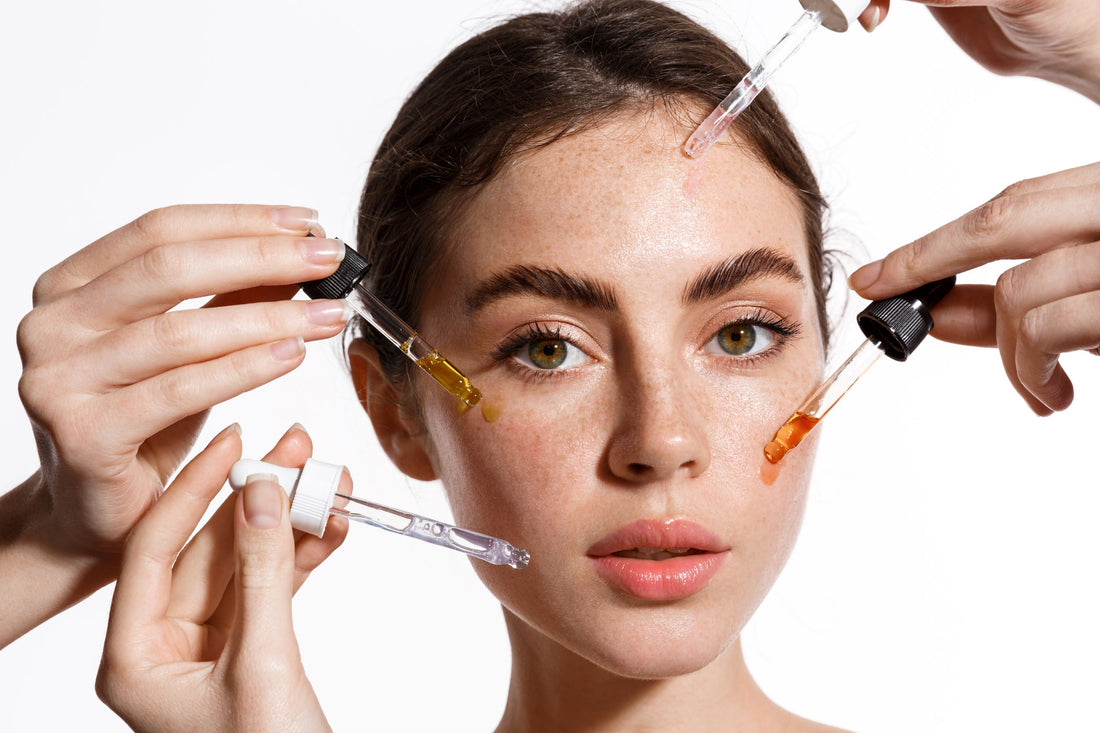
How to layer skincare ingredients
Many ingredients combined can make a heavenly skin recipe – others just don’t belong together. Mixing certain active ingredients can compromise the skin barrier and lead you down an uncomfortable path of inflammation, irritation and dehydration. But how do you know what does and doesn’t make the perfect skincare partner? Here we give you the lowdown on the art of skincare match-making...
Retinol and AHAs & BHAs
Retinol is a hero ingredient that boosts skin cell turnover, boosts collagen, supports sloughing of dead skin cells, and combats free radical activity to prevent cellular damage. To get nerdie, retinol is a derivative of vitamin A and natural precursor to retinoic acid. Once it’s absorbed into the skin, retinol is converted into retinoic acid, which is the active form of vitamin A, so the skin can reap the benefits of it.Truth be told, retinol can cause sensitisation when paired with some ingredients including exfoliating acids such as AHAs and BHAs which, like retinol, promote the sloughing of dead skin cells. Using these ingredients in the same evening (you shouldn’t use either in the morning), you risk weakening the skin barrier which can manifest as redness, tight sensations and dehydration.
I recommend using these active ingredients on alternate evenings – or even alternate weeks if your skin is more sensitive. Notably, I would say that PHAs (polyhydroxy acids) are the exception to the rule as they’re a gentler AHA that both exfoliates the skin and acts as a humectant.
Retinol and Vitamin C
Retinol and vitamin C are two powerhouse active ingredients that have amazing skin-boosting properties but can lead to irritation when layered together. As the use of retinol requires acclimatisation and can be irritating to some, it shouldn’t be used at the same time as vitamin C. This doesn’t mean that the you can’t include both in your regime though! Our Chemist Gabriela recommends using vitamin C underneath your broad-spectrum SPF in the morning as SPF shields the skin from UV rays, while vitamin C combats free radical damage caused by UV exposure. Then, use retinol at night to support the skin’s natural processes of cellular repair and proliferation which occur while you are sleeping.Another option is to switch to retinyl palmitate, the ester of retinol and palmitic acid – a complex fatty acid. This is gentler and known for being more tolerated by all skin types. This type of vitamin A can be layered with vitamin C but only use together if they have already been placed into a formulation together such as Skingredients Skin Protein, as all of the ingredients and levels would be compatibility tested to ensure they work together.
*Both retinol and retinyl palmitate are unsuitable for mamas-to-be.
Vitamin C and AHAs & BHAs
Vitamin C packs a punch in terms of antioxidant protection, but it’s an unstable ingredient that requires a particular pH balance in order to work wonders on your skin. Layering an AHA or BHA skincare product with vitamin C could disrupt and destabilise the pH balance which makes applying your vitamin C pointless.
Our in-house chemist Gabriela Duffy Morales advises that AHAs and BHAs should ideally be used in the evening because exfoliating acids can make our skin more susceptible to UV damage – even if you’re properly applying broad-spectrum SPF. Instead, stick to vitamin C in the mornings and use a BHA or AHA on the nights you’re not using retinol.
